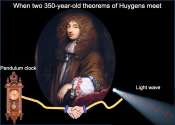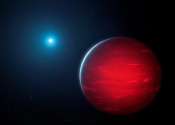Testing Einstein's E=mc2 in outer space
(Phys.org)—University of Arizona physicist Andrei Lebed has stirred the physics community with an intriguing idea yet to be tested experimentally: The world's most iconic equation, Albert Einstein's E=mc2, may be correct ...









